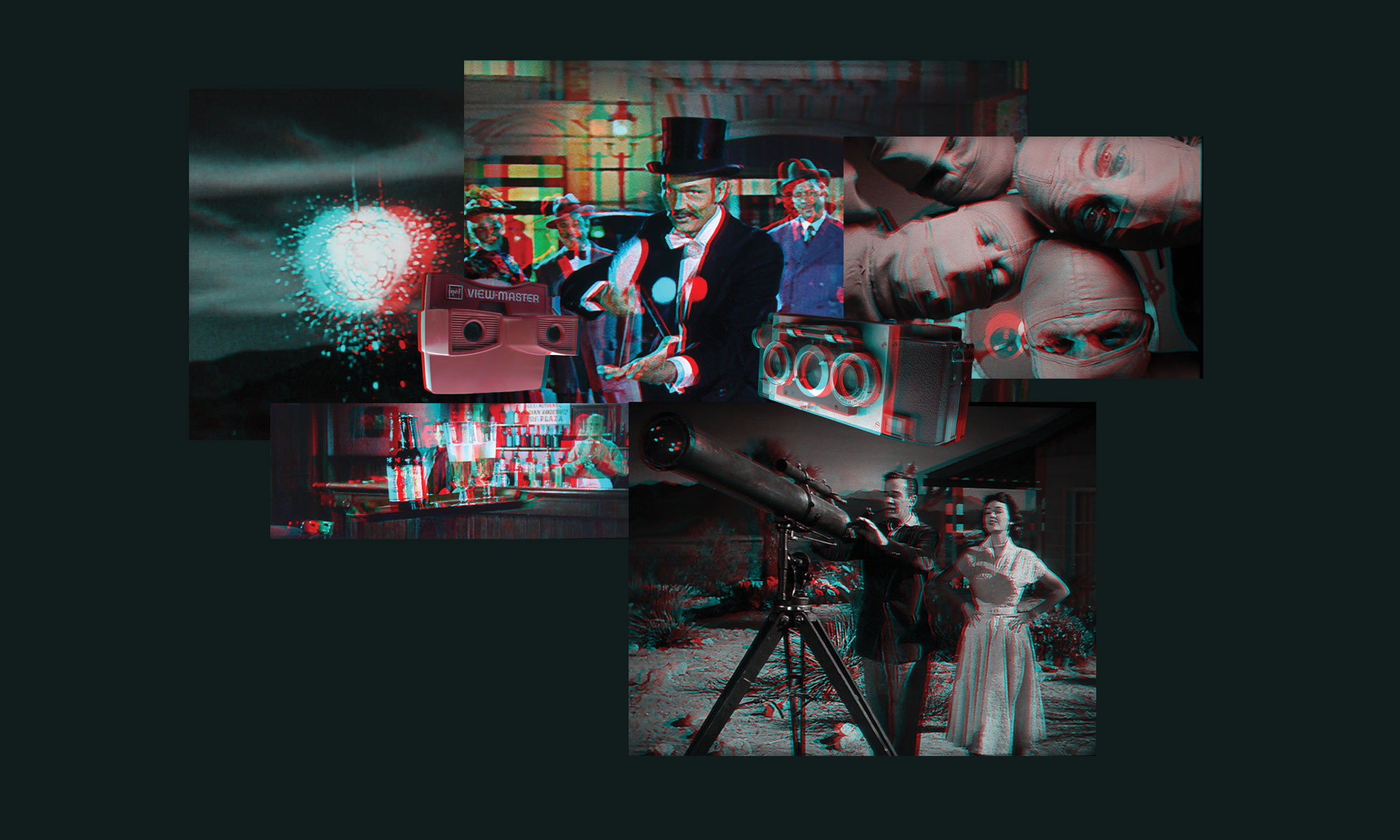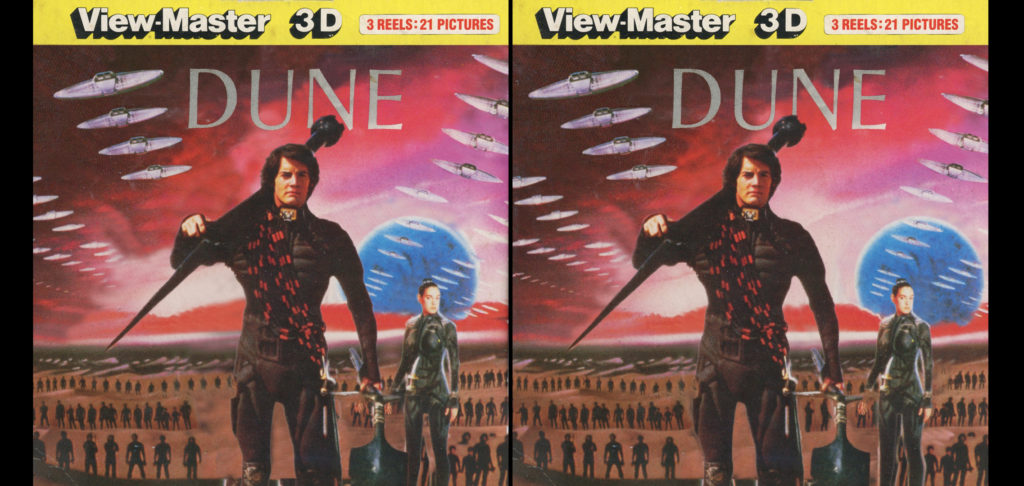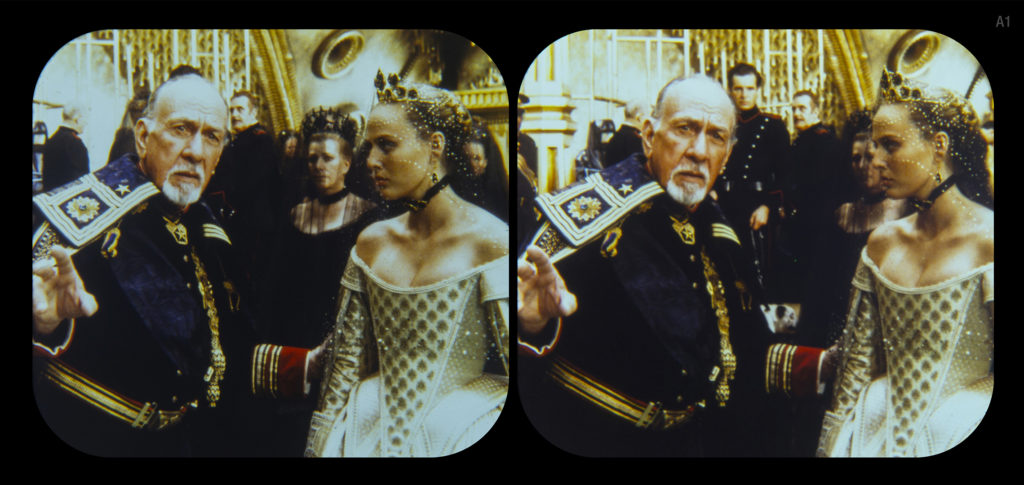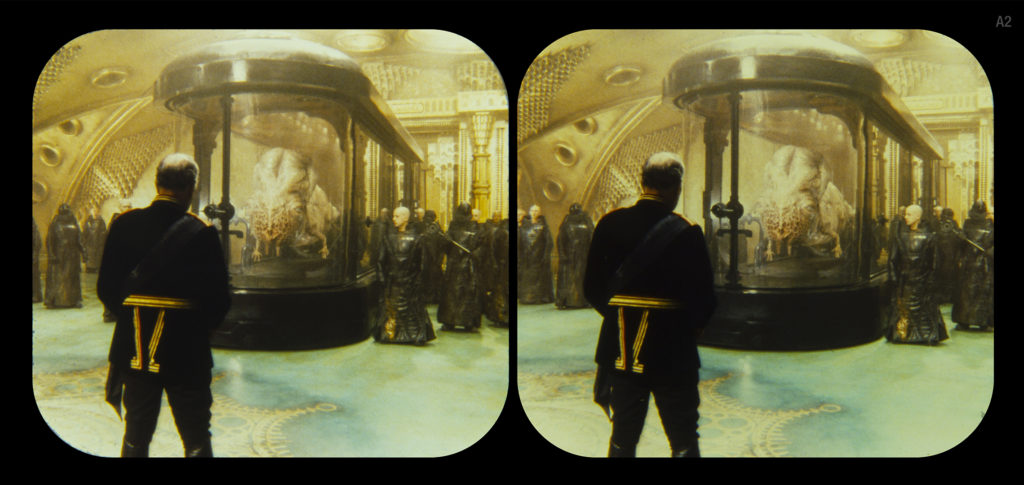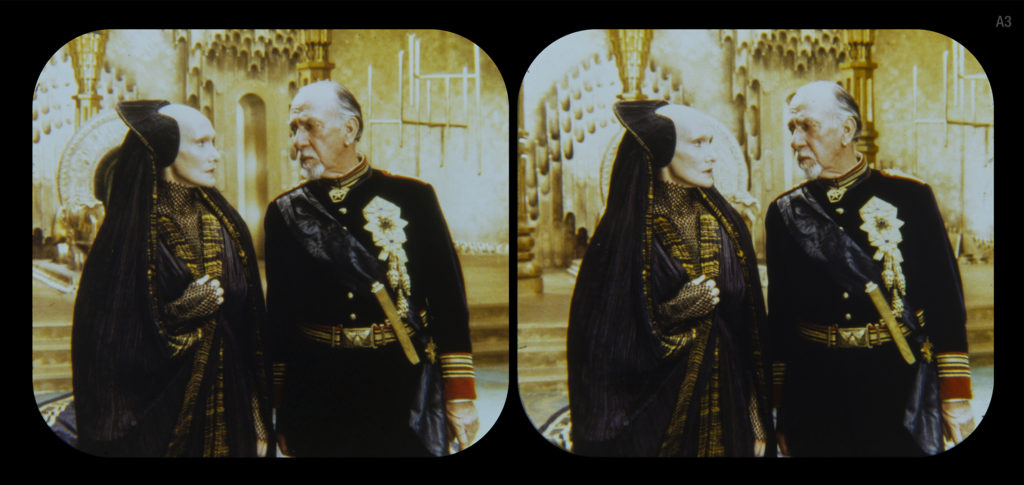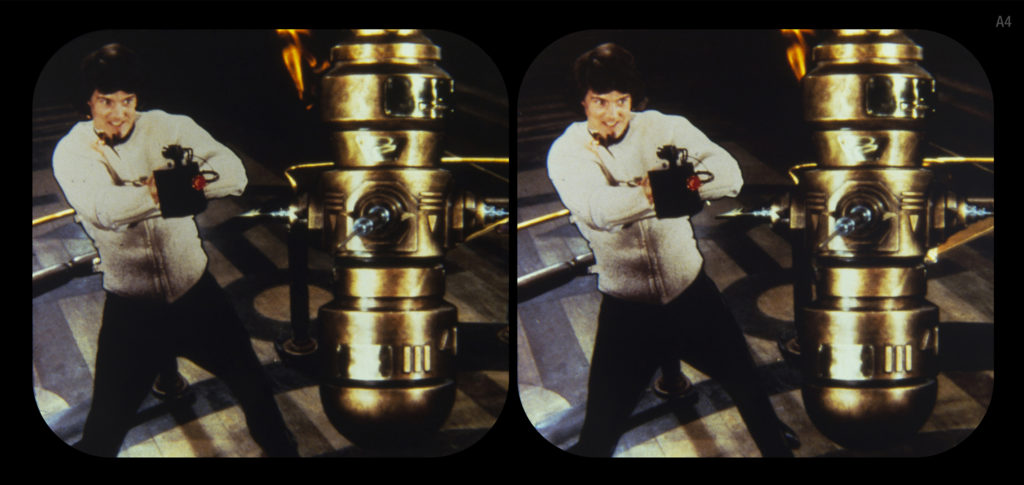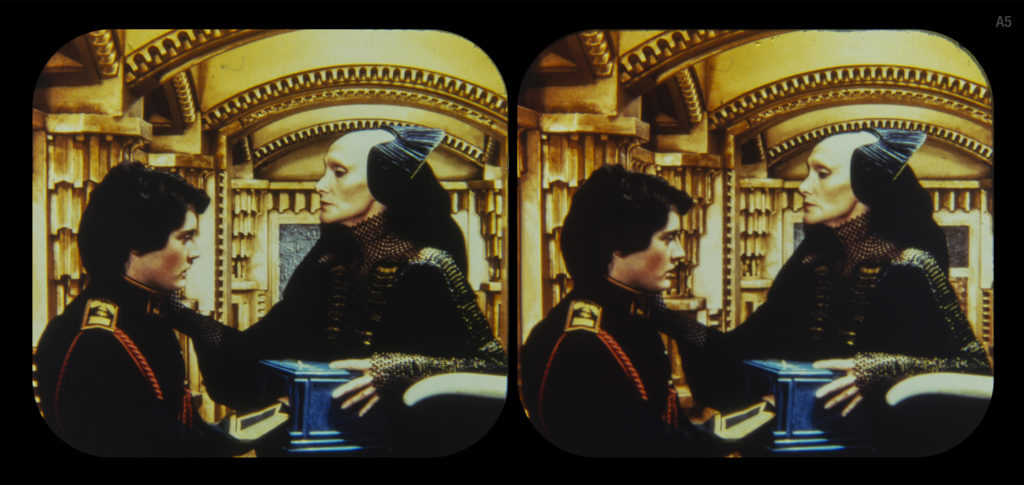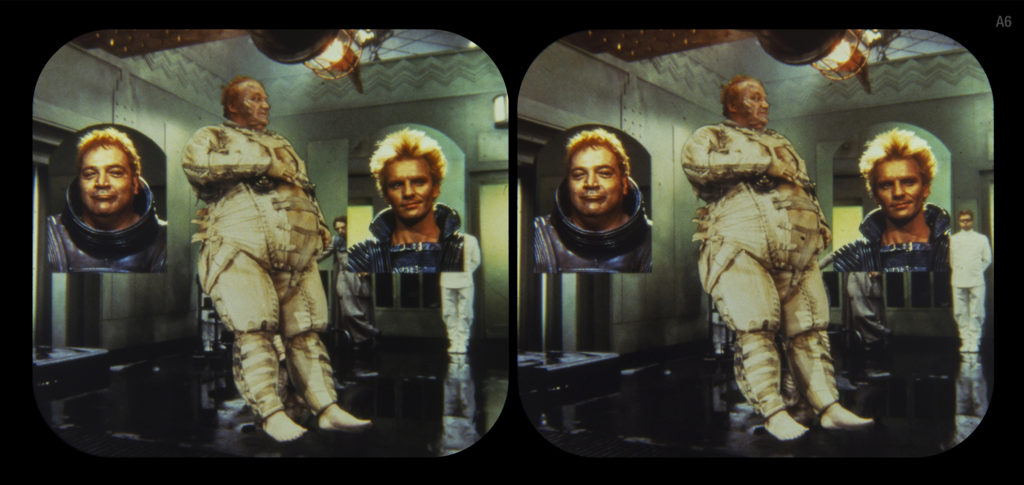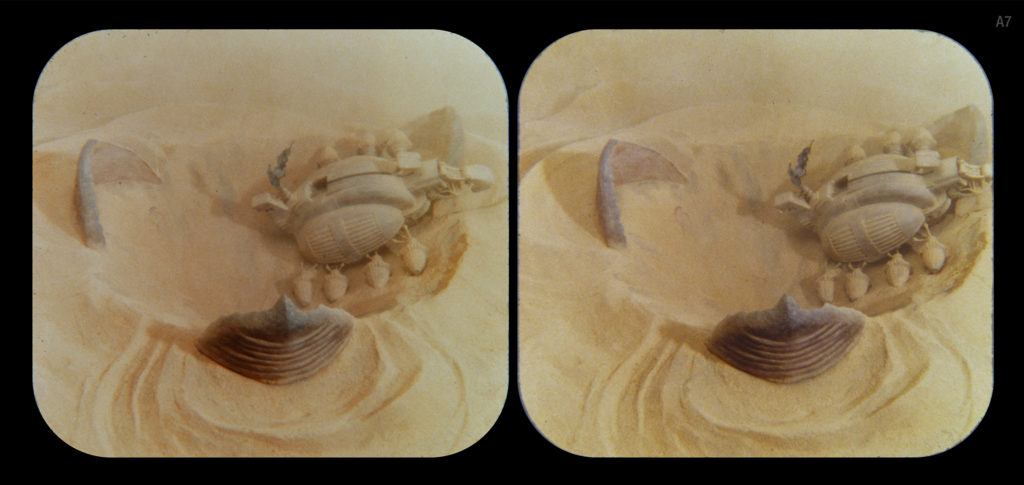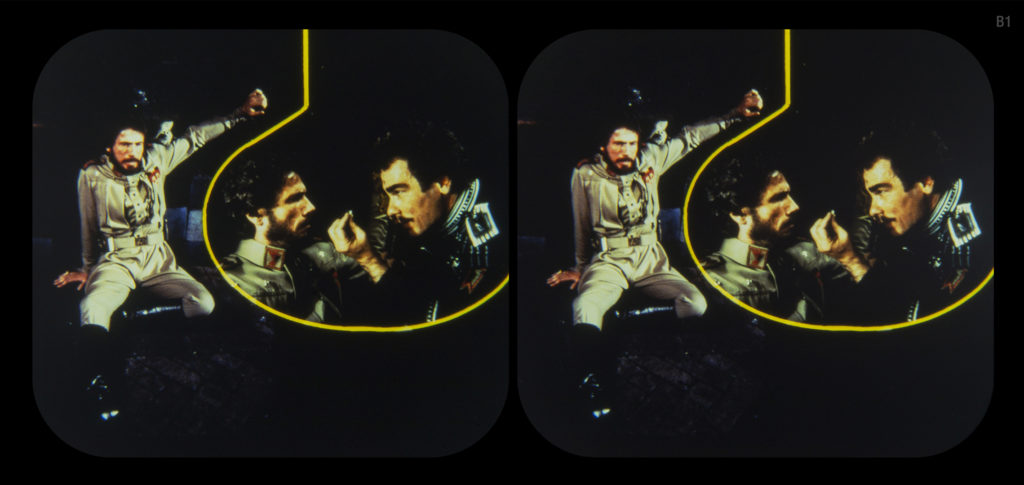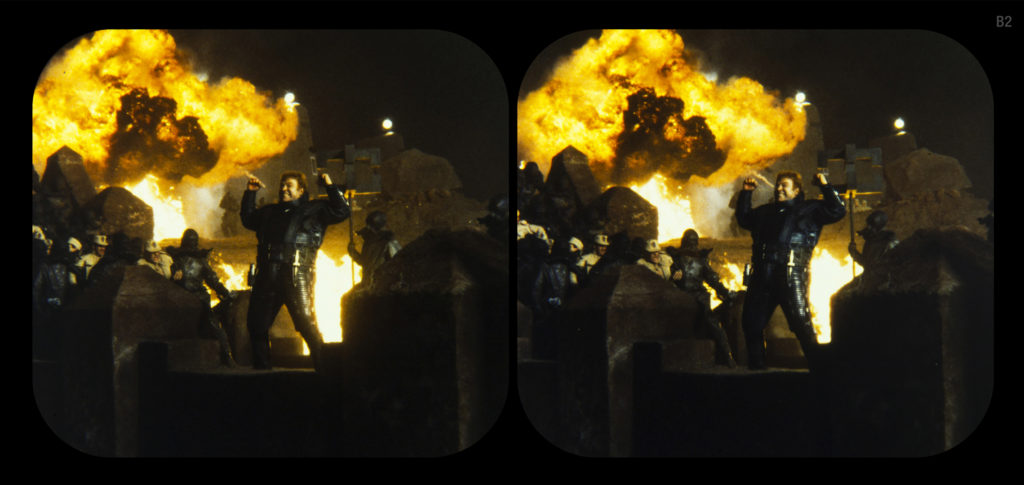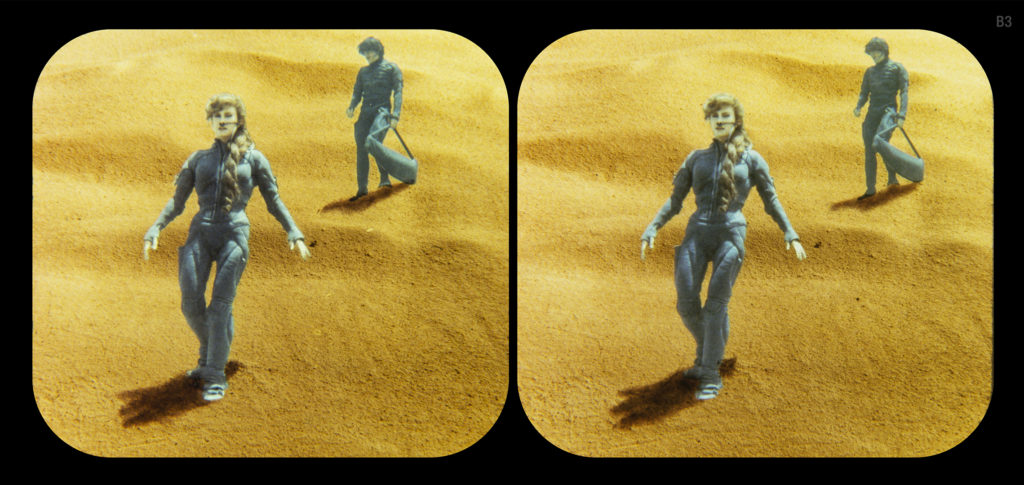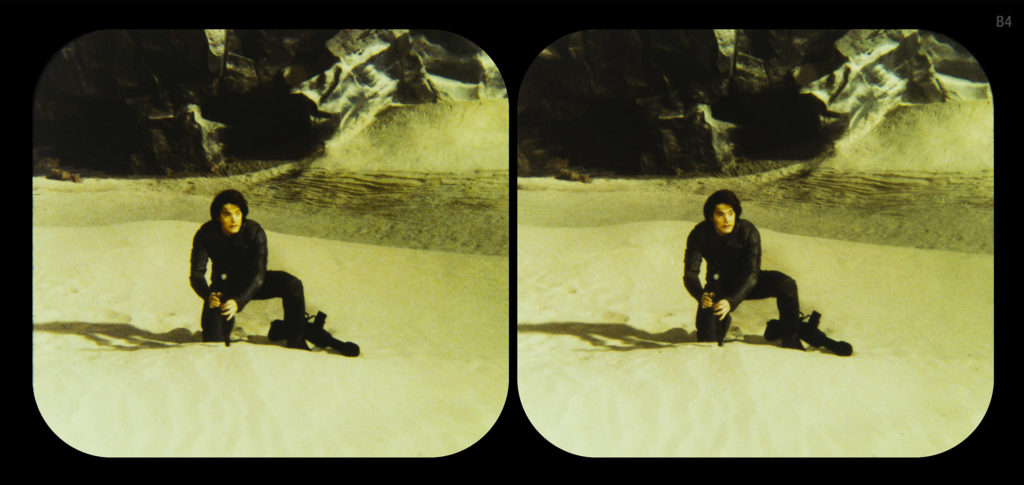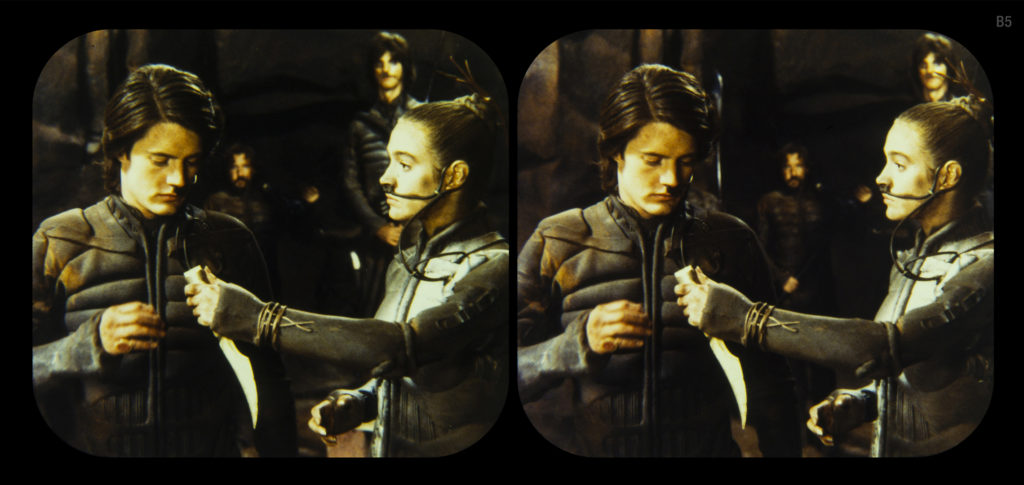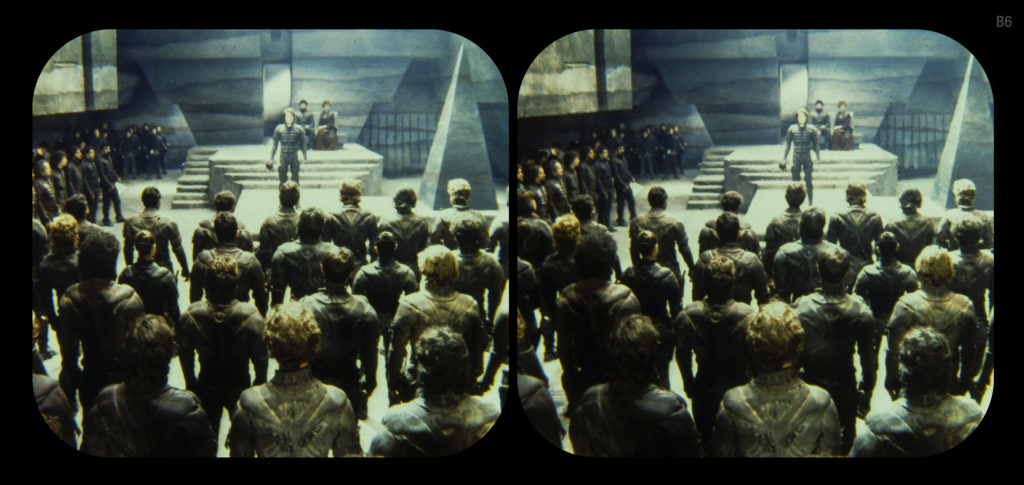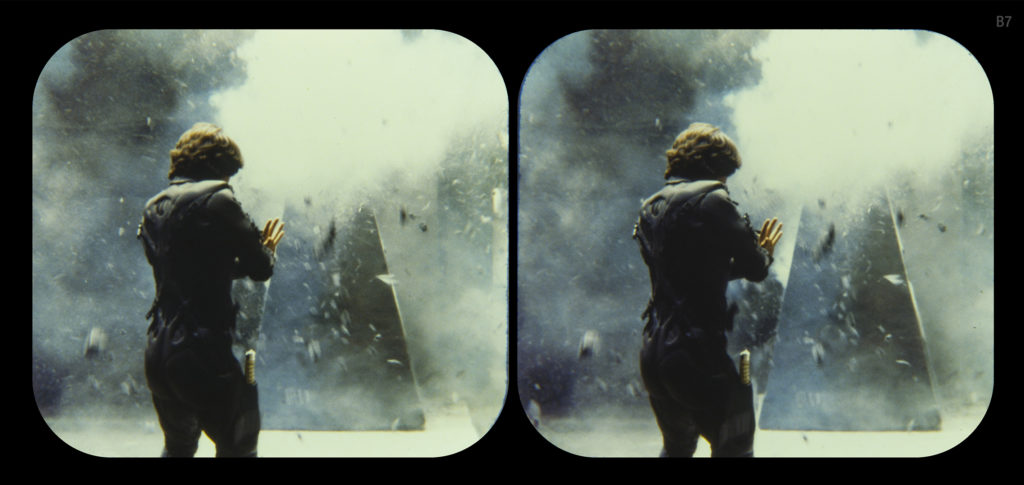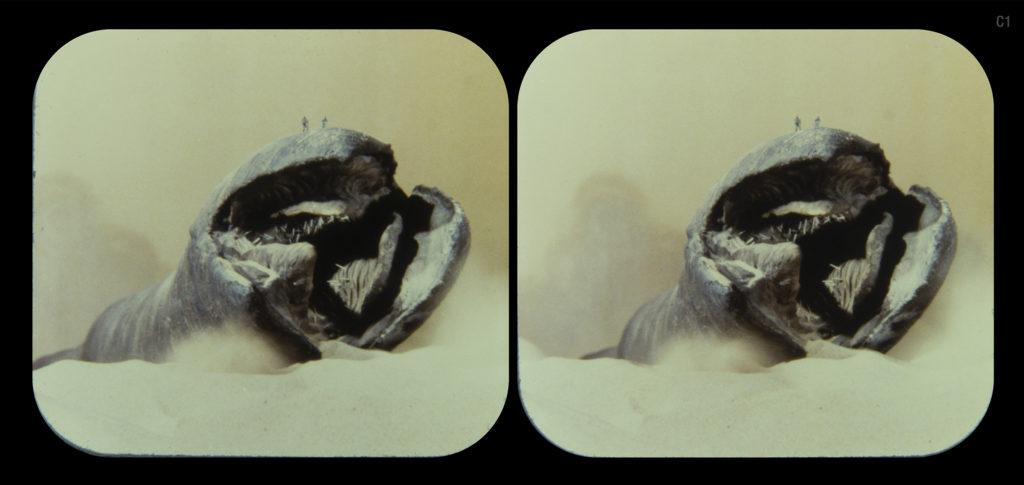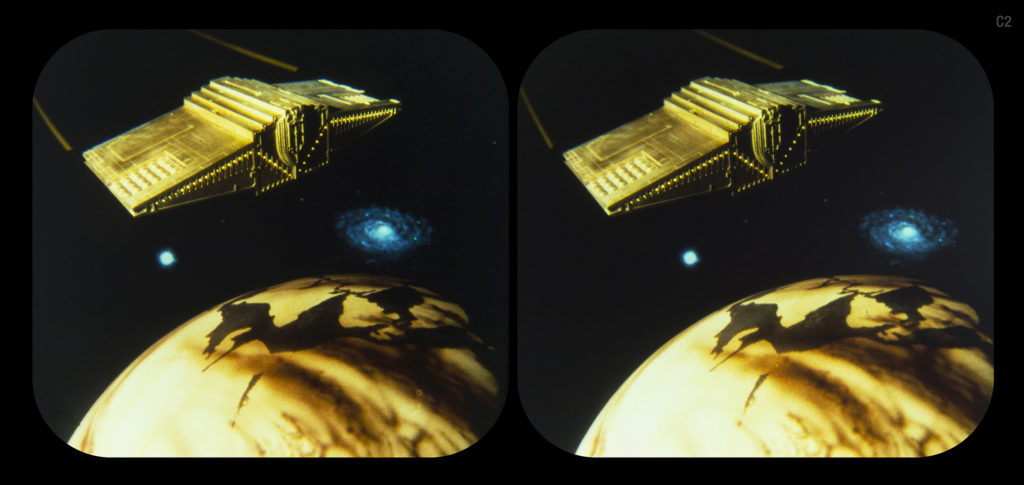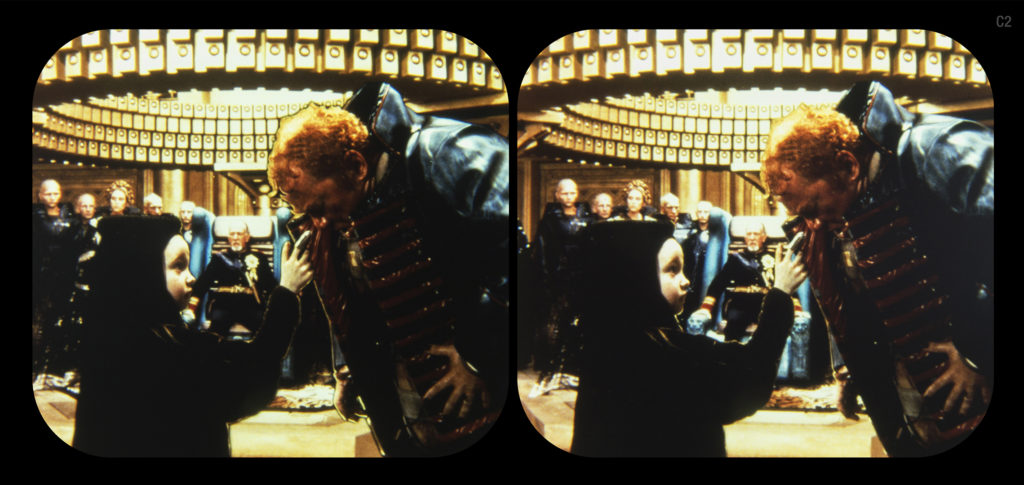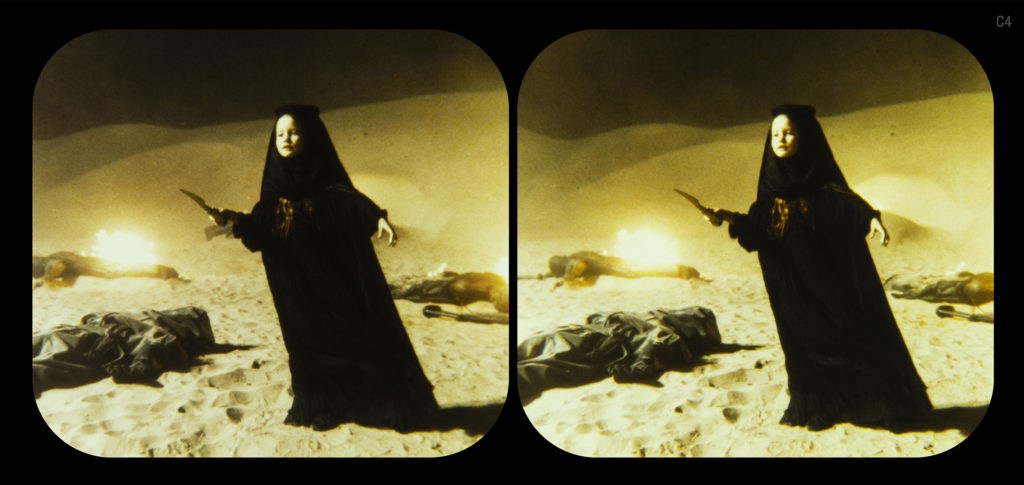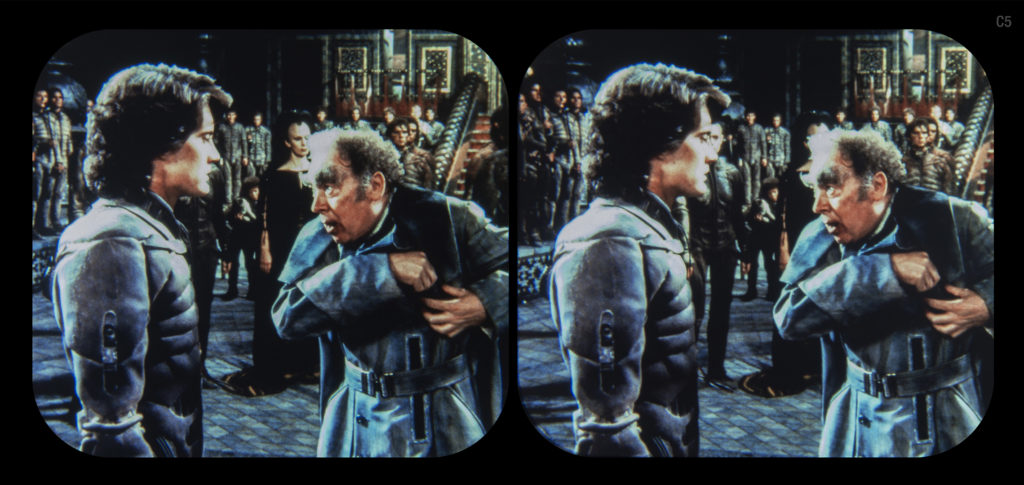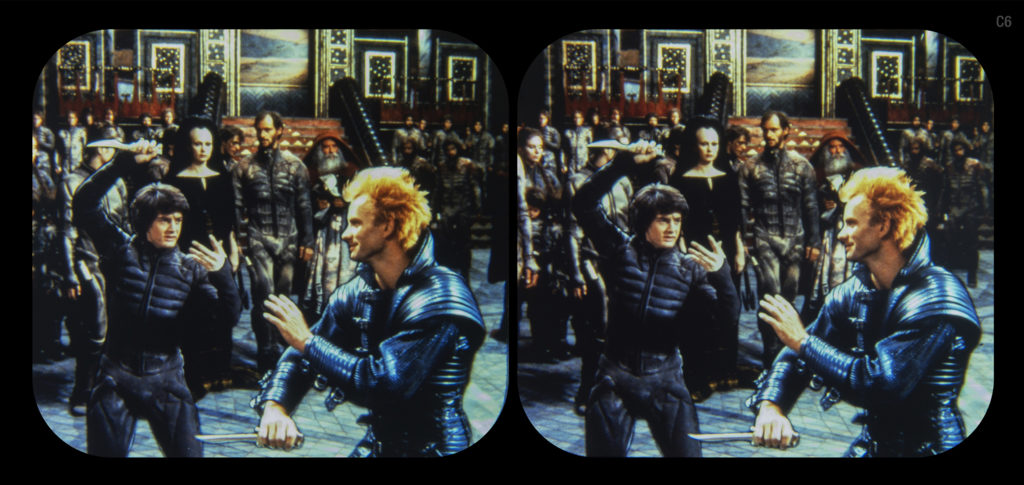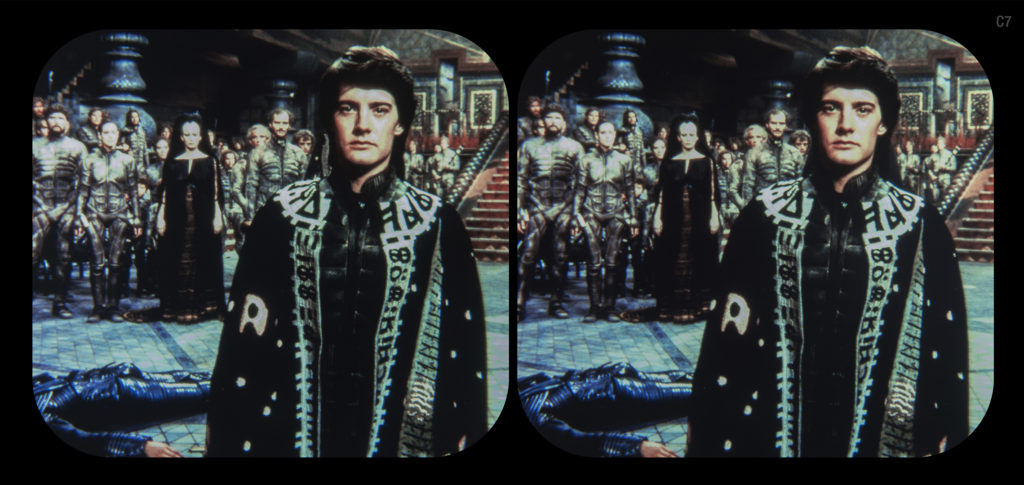David Lynch’s 1984 sci-fi epic Dune is generally considered a failure, albeit one with moments of brilliance. I confess, seeing it at the theaters in ’84, I was definitely in the “failure” camp. When they handed me a glossary of terms upon entering the theater, I knew we were in for trouble (wish I still had that crib sheet though!).
Since the arrival of Star Wars a few years earlier, expectations for each new sci-fi blockbuster grew in terms of visual effects, and this one seemed like a step back. Spacecraft often looked like what they were — photo cut-outs filmed against black. And while the sets and costumes were admittedly lavish, things were too often undercut by crude process photography, or wildly discordant electric guitar music by the rock band, Toto.
So it should come as no surprise that the View-Master set produced (somewhat incongruously) as a movie tie-in is also a mixed bag. Roughly half the frames are the cut-and-paste photo collages common to sets of that era. But, for at least a few days during the film’s production, there was clearly someone on set with a stereo camera rig. And they captured some spectacular shots: The Emperor (Jose Ferrer) in his gilded throne room alongside Carlo Rambaldi’s massive Navigator puppet; Beast Rabban (Paul L. Smith) standing atop a stone rampart, a massive fireball mushrooming in the background. Several scenes in the Fremen’s stronghold were also shot in stereo: Paul and Chani (Kyle McLachlan and Sean Young) with a “chryskinfe”; a gathering of Fremen warriors; and Paul blowing up an obelisk using the power of the “Weirding Module.” (No wonder this film failed. What kid wants a weirding module under the tree for Christmas? Okay, I admit it, I kind of did…)
My own stance on the film has softened somewhat over the years, coming to appreciate it as a flawed but important part of Lynch’s oeuvre. Some of the surreal montages sprinkled throughout could fit right in with his later work, right up to Showtime’s 2017 Twin Peaks revival (now that would have made a helluva View-Master set!).
A set of stereo pairs in parallel format follow below.
